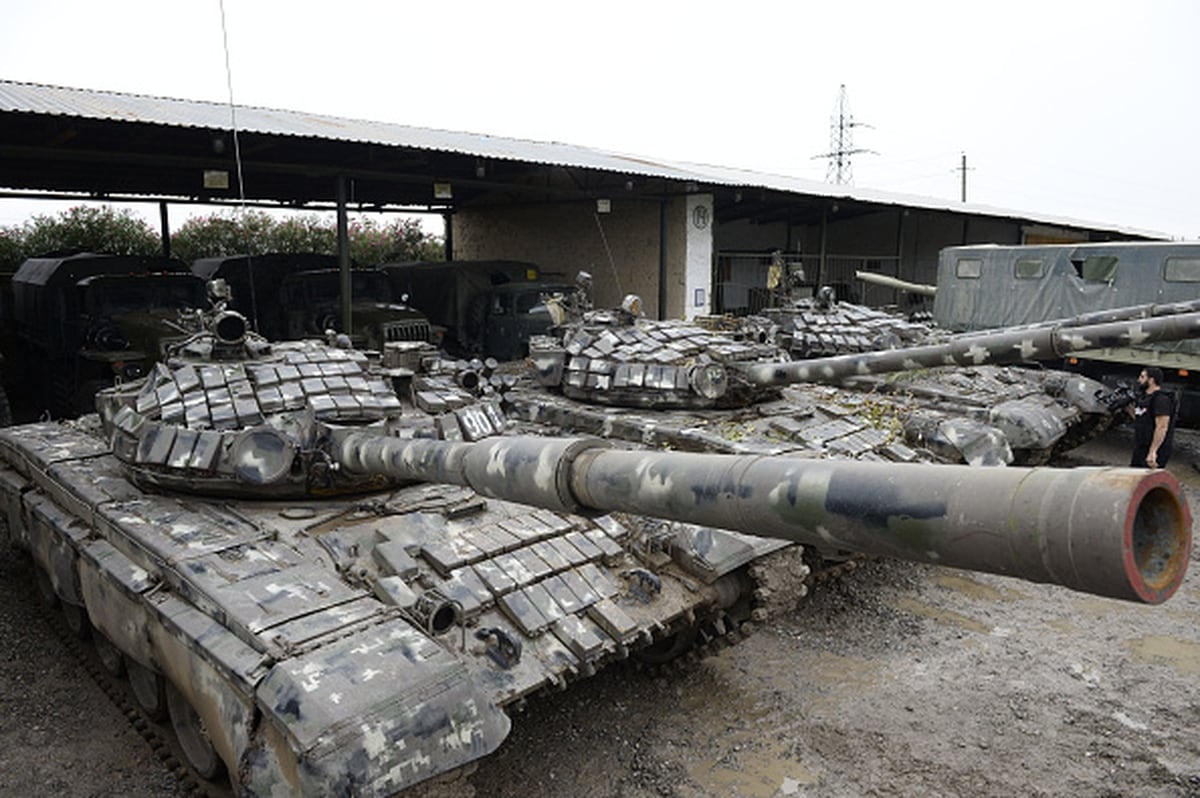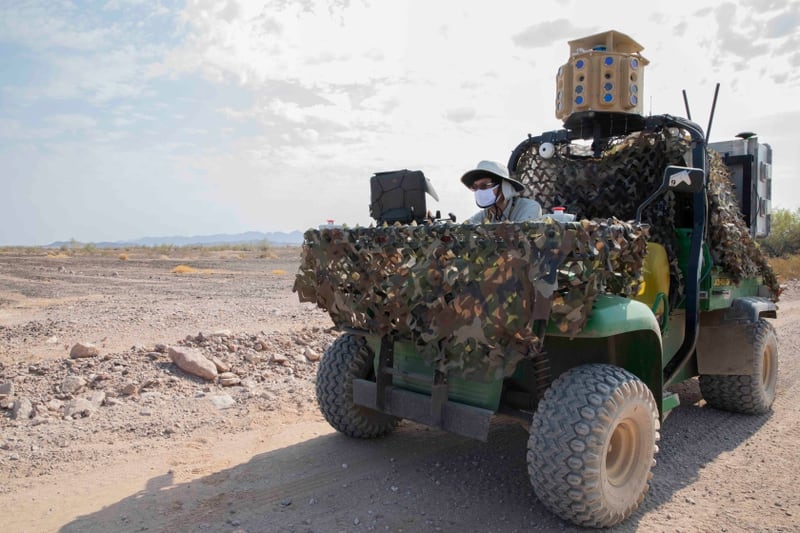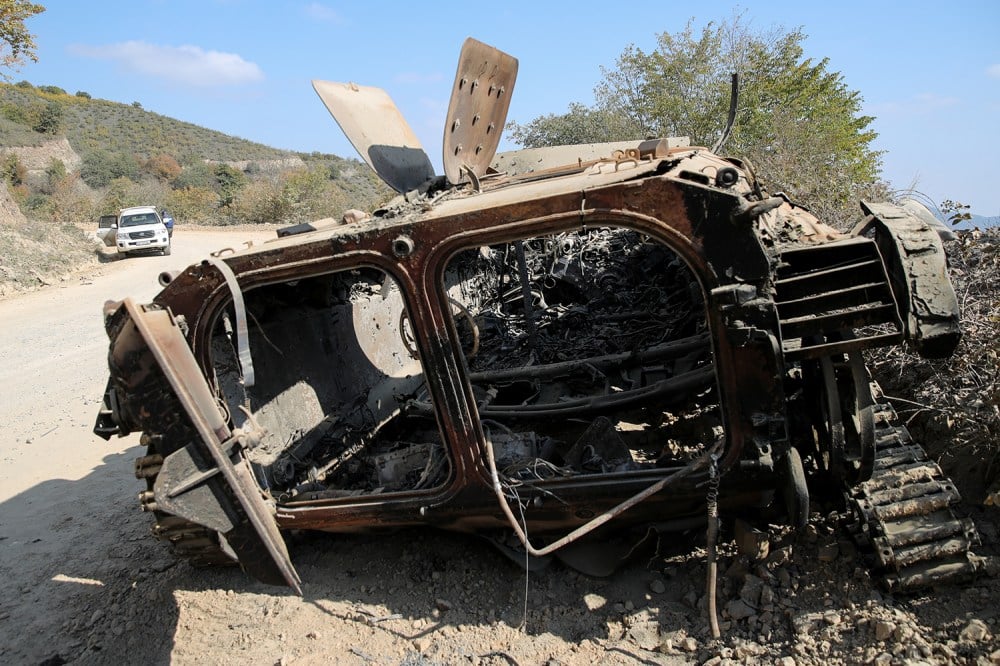Conflict in the Caucasus, recent exercise reinforce modernization needs, US Army chief says
Armenian tanks stand idled in the town of Beylagan on October 5stand idle. Azeri army officials said were seized during the ongoing fighting with Armenia over the breakaway Nagorno-Karabakh region, in the town of Beylagan on October 5, 2020. (Tofik Babayev/AFP via Getty Images)
State-produced videos of armored vehicles being devastated by airstrikes during the recent conflict between Armenia and Azerbaijan has caused some to wonder whether
tanks are too vulnerable,
slow and expensive for modern warfare.
Army leaders don’t think so, but the service’s chief of staff said the conflict does highlight a priority in developing air defense systems to defeat drones — and maybe even swarms of them.
“It reinforces some of the thoughts we already have," Gen. James McConville told Army Times during a recent telephone interview. “When we take a look at future warfare, we believe that we will be contested in every single domain. … We’re certainly going to be challenged on the land."
Manned and unmanned vehicles on the ground and in the air will up the stakes and “it’s going to be very lethal," McConville added.
To underscore how different this will be for U.S. forces, McConville noted that the last time a
U.S. soldier was killed by an enemy aircraft was in 1953, during the Korean War.
“So we’re enjoying air superiority, but we don’t necessarily see that in the future,” he added. “As we’re seeing in this fight and as we see in other places, [there are] lethal drones that we’re gonna have to deal with."
That’s why one of the Army’s modernization priorities is
air and missile defense, McConville explained, which includes lines of effort like putting
short-range Stinger missiles on Stryker vehicles.
“We are developing multiple capabilities to sense swarms of UASs and then defeat them," McConville said. "Whether it’s with a missile, gun, high-powered microwave or laser, we’ll have multiple ‘arrows,' so to speak, that we can use against the threat.”
Tanks like the Abrams and infantry fighting vehicles like the Bradley still have an important role to play, however.
“I see those in the future, because you’ve got to protect the soldiers when you move around on a very lethal battlefield,” McConville said.
Traditionally, infantry and armor complement one another by negating each other’s vulnerabilities. Infantry, for instance, can spot and kill anti-tank guided missile teams, and tanks can provide greater cover and maneuverability.
Greater interoperability between combat arms and support branches is the trend around which Army leaders are planning. And they want it to take mere seconds to do key parts of that coordination in combat.
“It’s all about providing air and ground in the joint force, working together," he added. "And really, that’s the concept we have, this
[Project] Convergence where we bring everyone together, and we have multiple sensors that can identify the enemy, and then choose the right weapon system, the most lethal effective weapon system to deal with that threat.”
Felix Jonathan, a robotics engineer from Carnegie Mellon University, inputs data into an autonmous ground vehicle control system during Project Convergence at Yuma Proving Ground, Arizona. (Spc. Carlos Cuebas Fantauzzi/Army)
Project Convergence was an exercise that ran this August and September at Yuma Proving Ground in Arizona. The point of the test this year was to pair artificial intelligence, autonomous systems and robotics together to move data very quickly from sensors to shooters.
“Back in the days of Desert Storm and Operation Iraqi Freedom, it was probably OK to take tens of minutes identifying the target and then actually putting rounds on,” Army Futures Command boss Gen. John M. Murray said during a virtual media event. “If you look at what we envision a future battlefield to look like, it’s not going to be tens of minutes.”
The test plan, according to an
Army news release, was to cut those kill-chain times down to less than 20 seconds during demonstrations on Sept. 21 and Sept. 23.
Project Convergence combined low-earth orbit satellites, an MQ-1C Gray Eagle drone and ground sensors that fed data “to a surrogate developmental program” at Joint Base Lewis-McChord, Washington, the release stated. Information was then sent to shooters on the ground at Yuma, who fired an artillery piece at a target in less than 20 seconds.
McConville was “very pleased” with the results that came out of the exercise.
“The idea of picking up a target and getting it to the shooter in seconds versus minutes is really going to change the lethality of the battlefield from where we sit and we really see tremendous potential with what we saw out there,” McConville explained.
That doesn’t mean there won’t be a need for "a person in the loop,” as McConville framed it. Critical stages will require human oversight. The difference comes down to the amount of work that will need to be done.
Sensors on a drone or manned airplane, for instance, can “soak” a target area with video recordings from great distances. But having a human sift through those feeds to identify targets can be incredibly time-consuming.
“Now we can actually use different sensors together that can be using an artificial intelligence in the future to determine what’s the actual target," McConville said.
“I see [armored vehicles] in the future, because you’ve got to protect the soldiers when you move around on a very lethal battlefield,” the Army chief of staff said.

www.armytimes.com




